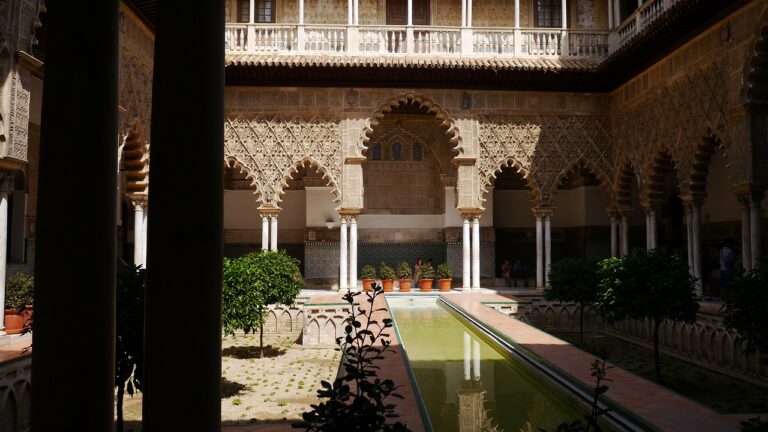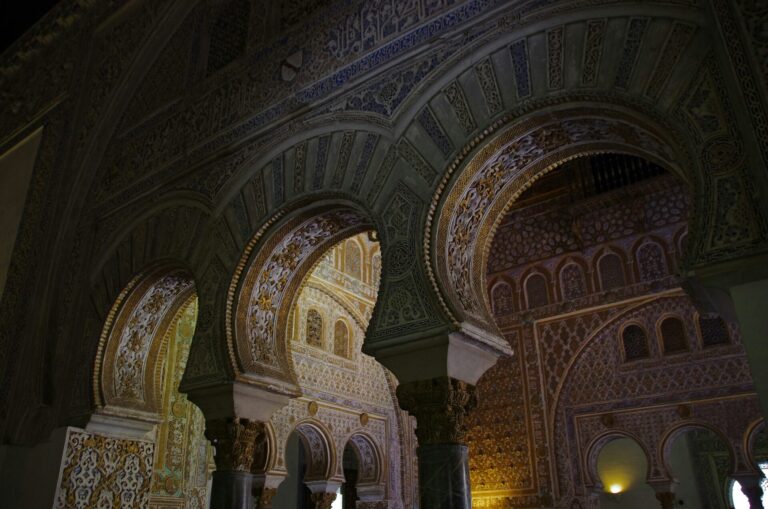Visiting the Alcázar of Seville
Visiting the Alcázar of Seville
The Real Alcázar of Seville, or the Royal Alcázar of Seville, is one of the most remarkable landmarks in Spain. This royal palace, originally developed by Moorish Muslim kings, is renowned for its stunning architecture, lush gardens, and rich history. Recognized as a UNESCO World Heritage site, the Alcázar is a must-visit for anyone traveling to Seville. In this blog post, we will explore the history, architecture, key features, and practical tips for visiting this magnificent palace.
History of the Alcázar of Seville
Moorish Beginnings
The origins of the Alcázar date back to the early 10th century when the Moors, Muslim rulers from North Africa, controlled much of Spain. The original palace, known as Al-Muwarak, was built by the first caliph of the Umayyad dynasty, Abd al-Rahman III. The palace served as a fortress and a residence for Moorish rulers.
Christian Conquest and Renovation
In 1248, King Ferdinand III of Castile conquered Seville during the Christian Reconquista. The Alcázar was transformed into a royal palace for the Christian kings, who retained many of the existing Moorish features while adding new elements in the Gothic, Renaissance, and Baroque styles. Over the centuries, each ruling monarch left their mark on the Alcázar, resulting in a unique blend of architectural styles.
Architectural Highlights of the Alcázar of Seville
Mudejar Architecture
One of the most distinctive features of the Alcázar is its Mudejar architecture, a style that combines Islamic art with Christian elements. This can be seen in the intricate tile work, ornate arches, and detailed plasterwork throughout the palace. The craftsmanship is exquisite, reflecting the fusion of cultures that defines Seville’s history.
The Patio de las Doncellas
The Patio de las Doncellas, or the Courtyard of the Maidens, is one of the most famous areas of the Alcázar. This stunning courtyard is surrounded by beautiful arches and decorated with intricate tile work. The central reflecting pool adds to the serene atmosphere. The courtyard’s name refers to a legend that Moorish kings demanded a tribute of 100 virgins from Christian kingdoms, although this story is likely a myth.
The Salón de Embajadores
The Salón de Embajadores, or the Hall of Ambassadors, is the grand reception room of the Alcázar. It was used for important ceremonies and meetings. The room is known for its impressive domed ceiling, which is adorned with intricate geometric patterns and gold details. The walls are covered in beautiful tiles and stucco work, showcasing the artistic skills of the craftsmen who built it.

The Gardens of the Alcázar of Seville
Lush and Expansive
The gardens of the Alcázar are just as breathtaking as the palace itself. Covering several acres, these gardens are filled with exotic plants, fountains, and pavilions. They are a perfect place to relax and enjoy the beauty of nature. The gardens reflect various styles, from the formal Moorish gardens to the more naturalistic English gardens added later.
Key Features of the Alcázar of Seville
The Mercury Pond: This large pond, with a statue of the Roman god Mercury in the center, is a striking feature in the gardens. It was originally used as a reservoir to supply water to the palace.
The Labyrinth: The garden includes a maze-like labyrinth made of hedges, providing a fun and challenging experience for visitors.
The Pavilion of Charles V: This Renaissance-style pavilion, built in the 16th century, offers a beautiful view of the gardens and is a perfect spot to rest and take in the scenery.
Practical Information for Visitors
Opening Hours and Tickets
The Alcázar is open to visitors year-round, but opening hours can vary depending on the season and day of the week. It is advisable to check the official website for the most up-to-date information on opening times and ticket prices. Tickets can be purchased at the entrance or online in advance, which is highly recommended to avoid long queues.
Guided Tours
For a deeper understanding of the Alcázar’s history and significance, consider joining a guided tour. Knowledgeable guides can provide fascinating insights and stories about the palace’s construction, its role in Seville’s history, and the various artworks and relics housed within. Audio guides are also available for those who prefer to explore at their own pace.
Tips for Visitors to the Alcázar of Seville
Arrive Early: The Alcázar can get very crowded, especially during peak tourist seasons. Arriving early in the morning can help you avoid the crowds and enjoy a more peaceful visit.
Wear Comfortable Shoes: The palace and gardens cover a large area, and you will be doing a lot of walking. Comfortable shoes are a must.
Stay Hydrated: Seville can be very hot, especially in the summer months. Make sure to bring water to stay hydrated during your visit.
Take Your Time: There is so much to see at the Alcázar, so take your time to explore and appreciate all the details.

Nearby Attractions
Located just a short walk from the Alcázar, the Cathedral of Seville is another must-see landmark. It is the largest Gothic cathedral in the world and houses the tomb of Christopher Columbus. The cathedral’s Giralda bell tower offers stunning views of the city.
The Barrio Santa Cruz
The Barrio Santa Cruz is Seville’s old Jewish quarter, characterized by its narrow, winding streets and charming plazas. It’s a great area to explore on foot, with many cafes, shops, and historic sites to discover.
The Plaza de España is a magnificent square located in the Maria Luisa Park. Built for the Ibero-American Exposition of 1929, it features beautiful tile work, fountains, and a canal where you can rent boats. It’s a great place to relax and take in the beauty of Seville.
